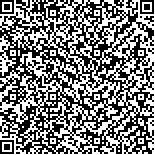吴福春,陈捷,余德标,等.基于经筋理论的理筋手法治疗膝骨性关节炎的疗效观察[J].中华物理医学与康复杂志,2023,45(6):538-542
扫码阅读全文

|
| 基于经筋理论的理筋手法治疗膝骨性关节炎的疗效观察 |
|
| |
| DOI:10.3760/cma.j.issn.0254-1424.2023.06.012 |
| 中文关键词: 理筋手法 超声波 运动疗法 膝骨性关节炎 步态 |
| 英文关键词: Tendon manipulation Ultrasound physiotherapy Exercise therapy Osteoarthritis Knees Gait |
| 基金项目:福建省自然科学基金(2021J01391);福建省卫生健康中青年骨干人才培养项目(2020GGA001) |
|
| 摘要点击次数: 3731 |
| 全文下载次数: 4661 |
| 中文摘要: |
| 目的 观察理筋手法对膝骨性关节炎(KOA)患者关节疼痛、活动功能及步态的影响。 方法 采用随机数字表法将61例KOA患者分为观察组(31例)及对照组(30例)。2组患者均给予超声波理疗及运动训练(包括股四头肌训练及提踵训练),观察组患者在此基础上辅以理筋手法治疗。2组患者均每天治疗1次,每周治疗5 d,连续治疗3周。于治疗前、治疗3周后分别采用视觉模拟评分法(VAS)、西安大略和麦克马斯特大学(WOMAC)骨关节炎指数量表及三维步态分析设备对2组患者膝关节疼痛、运动功能及步态时空参数(如步长、步速、双支撑相占比)进行评测。 结果 与治疗前比较,治疗后2组患者疼痛VAS评分、WOMAC量表关节疼痛、僵硬、功能障碍维度评分及总分均明显降低(P<0.05);观察组步长、步速及双支撑相占比均明显改善(P<0.05),对照组仅有步速、双支撑相占比明显改善(P<0.05)。通过组间对比发现,治疗后观察组患者疼痛VAS评分、WOMAC量表各维度评分、总分及步态时空参数(如步长、步速、双支撑相占比)均显著优于同期对照组水平(P<0.05)。 结论 在常规康复干预基础上辅以理筋手法能进一步缓解KOA患者疼痛,减轻膝关节功能障碍程度,提高步行效率,从而改善患者生活质量。 |
| 英文摘要: |
| Objective To observe any effect of tendon manipulation on the joint pain, joint motion and gait of persons with knee osteoarthritis (KOA). Methods Sixty-one KOA patients were randomly divided into an observation group (n=31) and a control group (n=30). Both groups received ultrasonic physiotherapy and exercise trai-ning (including quadriceps femoris training and heel raising training), while the observation group was additionally provided with daily tendon manipulation, five times a week for 3 weeks. Before and after the treatment, knee pain (using a visual analog scale (VAS)), motor function (using the Western Ontario and McMaster University (WOMAC) osteoarthritis index scale), step length, gait speed and the double support phase ratio were evaluated in both groups using three-dimensional gait analysis equipment. Results After the treatment the average VAS scores, as well as the joint pain, stiffness and dysfunction and the total WOMAC scores of both groups had decreased significantly. There was significant improvement in the average stride length, walking speed and the proportion of double support phase among the observation group, and the latter two measurements had also improved significantly in the control group. After the intervention, the average pain, WOMAC scores and gait descriptors of the observation group were significantly superior to the control group′s results. Conclusion Tendon manipulation can usefully supplement routine rehabilitation in the treatment of KOA, improving walking efficiency and thus life quality. |
|
查看全文
查看/发表评论 下载PDF阅读器 |
| 关闭 |
|
|
|